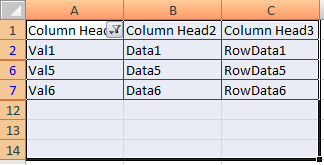
QUICK STARTĮxcel::Writer::XLSX tries to provide an interface to as many of Excel's features as possible. Excel::Writer::XLSX and Spreadsheet::WriteExcelĮxcel::Writer::XLSX uses the same interface as the Spreadsheet::WriteExcel module which produces an Excel file in binary XLS format. Text, numbers, and formulas can be written to the cells. Multiple worksheets can be added to a workbook and formatting can be applied to cells. The Excel::Writer::XLSX module can be used to create an Excel file in the 2007+ XLSX format. # Write a number and a formula using A1 notation $worksheet->write( 1, $col, 'Hi Excel!' ) $worksheet->write( $row, $col, 'Hi Excel!', $format ) # Write a formatted and unformatted string, row and column notation.

My $workbook = Excel::Writer::XLSX->new( 'perl.xlsx' ) To write a string, a formatted string, a number and a formula to the first worksheet in an Excel workbook called perl.xlsx: use Excel::Writer::XLSX Adding the VBA macros to a Excel::Writer::XLSX fileĮxcel::Writer::XLSX - Create a new file in the Excel 2007+ XLSX format.insert_image( $row, $col, $filename, ).write_comment( $row, $column, $string.repeat_formula( $row, $col, $formula, $format ).write_boolean( $row, $column, $value, $format ).write_array_formula($first_row, $first_col, $last_row, $last_col, $formula, $format, $value).write_formula( $row, $column, $formula, $format, $value ).write_url( $row, $col, $url, $format, $label ).write_date_time( $row, $col, $date_string, $format ).write_col( $row, $column, $array_ref, $format ).write_row( $row, $column, $array_ref, $format ).write_rich_string( $row, $column, $format, $string.write_string( $row, $column, $string, $format ).write_number( $row, $column, $number, $format ).



 0 kommentar(er)
0 kommentar(er)
